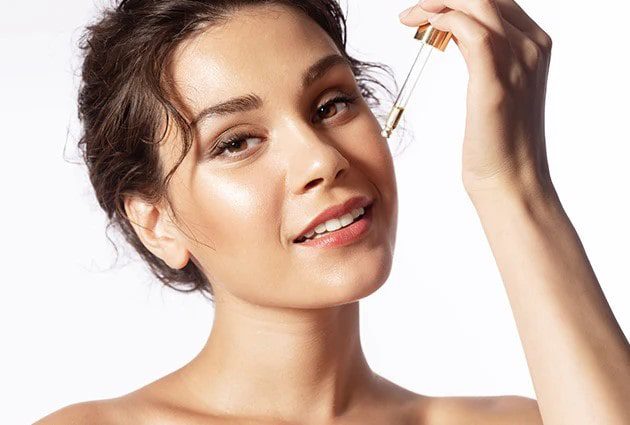It can seem impossible to achieve and keep healthy, bright skin in today’s hectic society. While balancing social obligations, career, and personal obligations, it’s simple to overlook self-care, particularly skincare. But having glowing skin is about more than simply looking beautiful—it’s also about feeling well. I can confirm that the path to radiant skin is worthwhile at every turn, having successfully negotiated the labyrinth of skincare recommendations. To have that desired glow, I’ll be sharing here some crucial skincare advice that every woman should know.
Knowing Your Skin Type
The first step to glowing skin is understanding your skin type. There are generally five skin types: oily, dry, combination, sensitive, and normal. Each type requires different care and products.
- Oily skin: Your face may appear glossy if you have oily skin, particularly in the T-zone (forehead, nose, and chin). Frequent outbreaks and large pores are typical. To prevent blocking pores, choose products that are oil-free or non-comedogenic.
- Dry Skin: Dry skin frequently feels flaky, tight, or scratchy. It is susceptible to redness and sensitivity. Seek for components like ceramides, glycerin, and hyaluronic acid that are nourishing and moisturizing.
- Combination Skin: The parts of combination skin are both dry and greasy. The cheekbones are usually dry, and the T-zone is usually greasy. Products that balance both requirements are the best.
- Skin Sensitive: Sensitive skin responds quickly to substances and surroundings. It may become inflamed, red, or scratchy. Make use of mild, fragrance-free products made for delicate skin.
- Typical Skin: Normal skin has a good complexion, equilibrium, and minimal blemishes. The secret is to maintain your skin healthy; use items that promote skin health without upsetting it.
Building a Basic Skincare Routine

Cleansing: The Foundation of Skincare
The basis of every skincare regimen is proper cleaning. It clears makeup, oil, and debris from the skin to avoid breakouts and congested pores.
-
Choosing the Right Cleanser
Choose a cleanser based on the type of skin you have. A foamy or gel cleanser is ideal for oily skin types. A cream or moisturizing cleanser is the best option for dry skin. Gentle cleansers without aroma are beneficial for sensitive skin.
- Methods for Cleaning Appropriately
Avoid using strong pressure when massaging the cleanser onto your face; instead, use gentle circular strokes. After rinsing with warm water, wipe dry with a fresh towel. Two times a day, in the morning and right before bed, cleanse.
Toning: Restoring Balance
Toners assist in balancing the pH of your skin and removing any remaining pollutants. Additionally, they can tighten pores and get your skin ready for the next treatment.
- Choosing a Toner
Find toners that are appropriate for your skin type. Toners without alcohol are mild and keep skin from drying out. Rose water and witch hazel, for example, are good for sensitive and oily skin, respectively.
Moisturizing: Hydration is Key
By hydrating your skin, you can avoid dryness and irritation. It also aids in preserving the skin’s barrier integrity.
- How to Choose the Best Moisturizer
According to your skin type, select a moisturizer. A light-textured, oil-free moisturizer is best for oily skin. Richer moisturizers with a cream base are better for dry skin. Combination skin may need a balanced formula, while sensitive skin requires gentle, hypoallergenic products.
Sunscreen: Your Skin’s Best Friend
Sunscreen is necessary to shield your skin from UV radiation, which can lead to skin cancer, sunburns, and early aging.
- Using Sunscreen Properly
Make use of a broad-spectrum sunscreen with a minimum SPF of thirty. Use it liberally on any exposed skin, even on overcast days. When outside, reapply every two hours.
Read Also: What is an uneven skin tone?
Advanced Skincare Tips
Exfoliation: Removing Dead Skin Cells
Dead skin cells can be removed via exfoliation, exposing bright, new skin underneath. To prevent irritability, it should only be used in moderation.
- Different Kinds of Exfoliants: Granules in physical exfoliants are used to physically wipe away dead skin cells. AHAs and BHAs are examples of chemical exfoliants that break the connections that hold dead cells together, encouraging natural cell turnover.
- Frequency of Exfoliation: Depending on the nature and tolerance of your skin, exfoliate one or two times a week. While oily skin can tolerate more exfoliation, sensitive skin may need less.
Incorporating Serums: Targeted Treatments
Concentrated compositions called serums are made to address particular issues with the skin, like wrinkles, dark spots, or dehydration.
- Selecting the Proper Serum: Determine the issues you have with your skin and select serums with active ingredients to solve them. Hyaluronic acid moisturizes, retinol lessens indications of aging, and vitamin C brightens and evens out skin tone.
Masks: A Weekly Pleasure
Face masks give your skincare regimen an additional boost. They can take care of everything from detoxification to dehydration.
- Kinds of Masks: Because clay masks absorb excess oil and purify pores, they are excellent for oily skin types. For dry skin, hydrating masks containing hyaluronic acid and aloe vera are ideal. Sheet masks provide an immediate glow by delivering a concentrated concentration of active ingredients.
Eye Creams: Gently Treating Your Eyes
Your eye area’s skin is thin and vulnerable to aging symptoms. By using an eye cream, you can minimize puffiness and dark circles while also hydrating this area.
- Using Eye Cream: Using your ring finger, gently dab the eye cream around your orbital bone. To avoid pulling at the sensitive skin, do not rub.
Lifestyle Factors for Glowing Skin

Diet: You Are What You Eat
Your skin can be greatly impacted by what you consume. Healthy skin is supported from within by a diet rich in vitamins, minerals, and antioxidants that is well-balanced.
- Foods that Promote Skin Health: Make sure your diet is rich in fruits, vegetables, lean proteins, and healthy fats. Omega-3 fatty acid-rich foods, such as walnuts and salmon, support the suppleness of the skin. Foods high in antioxidants, such leafy greens and berries, guard against harm from free radicals.
Hydration: Drink Up
Maintaining hydration is crucial for good skin. Water keeps your complexion clear, helps remove toxins from your skin, and preserves skin elasticity.
- How Much Water Is Best?: Try to have eight glasses of water or more each day. If you have an active lifestyle or reside in a warm region, up your intake.
Sleep: Beauty Rest
It’s critical to get enough sleep for healthy skin. While you sleep, your skin repairs and regenerates.
- Tips for Improving the Quality of Your Sleep: Maintain a regular sleep schedule and peaceful nightly routine, and make sure your sleeping area is comfortable and dark. Every night, try to get seven or nine hours.
Stress Management: Calm and Clear
Your skin may suffer from breakouts and dullness as a result of stress. Developing stress management techniques might help your skin look better.
- Activities that Reduce Stress: Engage in relaxing activities like yoga, meditation, or deep breathing. Taking part in enjoyable hobbies and keeping a good work-life balance are two other strategies to lower stress.
Common Skincare Mistakes to Avoid
- Excessive Cleaning: Over-cleansing can cause your skin to become dry and irritated by removing its natural oils. Continue washing twice daily.
- Ignoring Sunscreen: Sun damage and an increased risk of skin cancer can arise from not wearing sunscreen. Make applying sunscreen a must-have item in your regimen.
- Putting Too Much Into One Product: Overdosing on cosmetics can irritate and overwhelm your skin. Make your routine simpler and concentrate on necessary, useful things.
- Disregarding Your Hands and Neck: Your hands and neck are equally as vulnerable to aging as your face.
Read Also:
How Women Can Get Healthy, Glowing Skin
Achieve Radiant Skin with These Tips
Conclusion
It takes knowledge of your skin type, a regular skincare regimen, and an all-encompassing approach to skincare to attain radiant, healthy skin. You can change your skin tone and increase your self-confidence by paying attention to these crucial pointers and making wise decisions. Recall that taking care of your skin is an investment in your general wellbeing and that skincare is a type of self-care. So shine up and love your skincare journey!
FAQ’s
How can I determine my skin type?
The first step to good skincare is figuring out your skin type. Start by washing your face in order to determine your skin type. After giving it a light cleaning, pat it dry. Check the texture of your skin an hour or so later. Your skin is probably dry if it seems flaky or feels tight. If it appears shiny or greasy, especially in the T-zone (forehead, nose, and chin), you probably have oily skin. Combination skin features both oily and dry areas, typically oily in the T-zone and dry on the cheeks.
How often should I exfoliate my skin?
Exfoliation is essential for getting rid of dead skin cells and encouraging a radiant, new complexion, but it needs to be done carefully. Exfoliating 1-2 times a week is suitable for most skin types. To prevent irritation, start once a week if you have sensitive skin. Exfoliation should occur more frequently in the case of oily skin types, but no more than three times a week to avoid overstripping the skin. If you have sensitive or acne-prone skin, choose a gentle exfoliation that is appropriate for your skin type. Physical exfoliants with granules work well for skin that is robust, while chemical exfoliants like AHAs and BHAs are often preferable.







